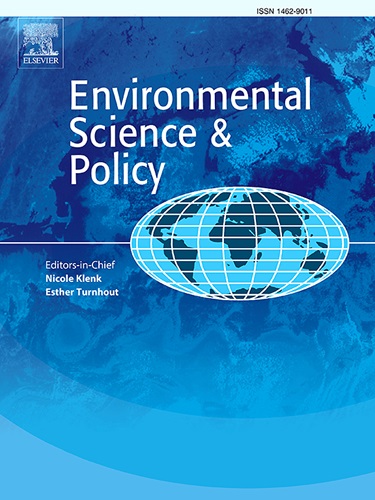Social network analysis of conservation and one health governance in Madagascar
IF 5.2
2区 环境科学与生态学
Q1 ENVIRONMENTAL SCIENCES
引用次数: 0
Abstract
Madagascar, a globally recognised biodiversity hotspot, faces escalating biodiversity loss and zoonotic disease risks. Weak response systems and fragmented governance further exacerbate these threats. This study identifies key conservation and health actors and analyses their connections to understand decision-making and information flow. The findings emphasise the need to integrate One Health into conservation strategies to address interconnected public health and biodiversity challenges. Following the Laumann-Marsden-Prensky framework, a social network analysis (SNA) survey was conducted between March 14 and June 24, 2022. The study involved 30 senior leaders (≥5 years experience) in biodiversity conservation and health in Madagascar. Key network metrics, indegree, outdegree, and eigenvector centrality, identified influential actors, while network density and centralisation assessed structural cohesion. Participants listed collaborators in conservation and health projects and funding sources. The strength of One Health integration and interaction was quantified. Among 287 identified actors, 54.4 % are international entities. SNA shows that foreign organisations dominate collaboration and funding networks in conservation and public health governance, while local government bodies have limited involvement. Only a few stakeholders have effectively integrated the One Health approach into their conservation and health governance practices. These findings highlight a reliance on international actors, primarily due to funding access, with limited local participation. While international support provides crucial resources, greater national and local leadership is essential for the sustainable implementation of One Health. This study provides insights to enhance local involvement in conservation governance.
马达加斯加环境保护和单一卫生治理的社会网络分析
马达加斯加是全球公认的生物多样性热点,它面临着日益加剧的生物多样性丧失和人畜共患疾病风险。薄弱的应对系统和支离破碎的治理进一步加剧了这些威胁。本研究确定了关键的保护和健康行为体,并分析了它们之间的联系,以了解决策和信息流。这些发现强调需要将“同一个健康”纳入保护战略,以解决相互关联的公共卫生和生物多样性挑战。根据Laumann-Marsden-Prensky框架,在2022年3月14日至6月24日期间进行了一项社会网络分析(SNA)调查。该研究涉及马达加斯加生物多样性保护和卫生领域的30名高级领导(经验≥5年)。关键的网络指标,度、度和特征向量中心性,确定了有影响力的参与者,而网络密度和集中度评估了结构凝聚力。与会者列出了保护和健康项目的合作者以及资金来源。对One Health整合和相互作用的强度进行量化。在287个确定的行动者中,54.4% %是国际实体。SNA表明,外国组织主导了保护和公共卫生治理方面的合作和资助网络,而地方政府机构的参与有限。只有少数利益攸关方有效地将“同一个健康”方法纳入其保护和健康治理实践。这些调查结果强调了对国际行为体的依赖,主要是由于资金的获取,当地参与有限。虽然国际支持提供了至关重要的资源,但更大的国家和地方领导对于可持续地实施“同一个健康”至关重要。本研究为加强地方参与保育管治提供了见解。
本文章由计算机程序翻译,如有差异,请以英文原文为准。
求助全文
约1分钟内获得全文
求助全文
来源期刊

Environmental Science & Policy
环境科学-环境科学
CiteScore
10.90
自引率
8.30%
发文量
332
审稿时长
68 days
期刊介绍:
Environmental Science & Policy promotes communication among government, business and industry, academia, and non-governmental organisations who are instrumental in the solution of environmental problems. It also seeks to advance interdisciplinary research of policy relevance on environmental issues such as climate change, biodiversity, environmental pollution and wastes, renewable and non-renewable natural resources, sustainability, and the interactions among these issues. The journal emphasises the linkages between these environmental issues and social and economic issues such as production, transport, consumption, growth, demographic changes, well-being, and health. However, the subject coverage will not be restricted to these issues and the introduction of new dimensions will be encouraged.
 求助内容:
求助内容: 应助结果提醒方式:
应助结果提醒方式:


